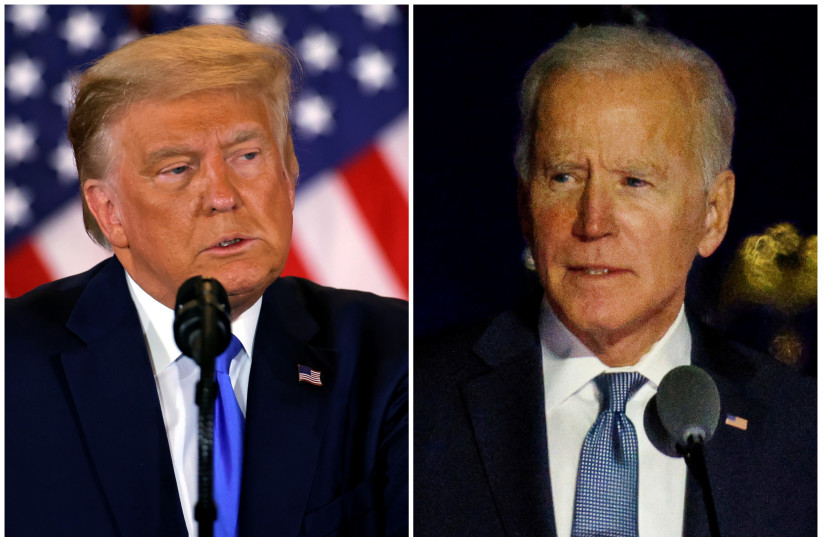
Among the obstacles that might block the US and Iran from returning to their 2015 nuclear deal is the sanctions infrastructure left behind by the Trump administration.
If US president Donald Trump had merely snapped back the sanctions instituted in Barack Obama’s era, it would have been much easier for US President Joe Biden’s administration to remove them.
Instead, Trump left a booby-trapped minefield that could be difficult for the Biden administration to untangle even if it wants to.
Throughout his term and especially in his waning months in office, Trump ordered a range of new sanctions relating to the Islamic Republic’s actions regarding human rights and ballistic missiles.
What is special about sanctions in those categories is that the 2015 nuclear deal allowed them to continue – even the Obama administration never removed these “non-nuclear” sanctions.
Technically, that would mean Iran would have no basis to demand the removal of any of these sanctions.
Yet Tehran has demanded that all new Trump-era sanctions be removed, and that only non-nuclear Obama-era sanctions can remain if a return to the deal is to occur.
In both public statements and comments to reporters over the weekend, the US State Department flagged this issue as a messy one to navigate.
It is not only that Biden officials see no reason to remove valid human rights or ballistic missiles sanctions that were imposed during the Trump era. It is also because the administration agrees with Iran that Trump officials labeled some nuclear sanctions under human rights or ballistic missiles, to make it both functionally and politically harder for Biden to undo them.
So even if Iran really is ready to return to the 2015 deal’s nuclear limitations and Biden is ready to remove all nuclear sanctions, will Iran trust the Biden administration to “play it straight” and remove sanctions that the Trump administration mislabeled non-nuclear?
How can the US convince Iran it is only keeping “real” human rights and ballistic missiles-related sanctions, while removing those which are allegedly mislabeled?
The US State Department does not appear to have a direct answer other than referring to it as a sticky one.
The Iranians are also trying to feel out whether the US is serious in general.
Iran seems surprised that the Biden administration did not rush back into the 2015 deal, which was put off by US officials’ statements that they want to “lengthen and strengthen” the original deal.
US State Department officials implied that it was not even clear that Iranian negotiators came into the first negotiating round with full authority to jump forward.
The Iranian narrative that a deal is less likely rather than more would suggest that Iran’s negotiators and decision-makers are not actually committed, or remain undecided.
State Department officials said that Iran has not defined what verification they would require for removal of US sanctions.
A US official implied that Tehran would need to define that before negotiators can decide on sequencing a return to nuclear limitations including the removal of sanctions.
A formula under discussion is a private agreement to sequence between the sides, while publicly presenting any deal as though it happened all at once so that the Iranians can save face.
One question under discussion is what the US State Department would demand regarding Iran’s advanced centrifuges that were not yet operating in 2015.
Under the 2015 deal, Iran was allowed a limited number of advanced centrifuges, but it has now gone way beyond that number.
Turning back the clock might mean more than simply putting currently spinning centrifuges on ice.
This issue will also be politically delicate for Iran as it nurses its wounds from Sunday’s operation that wiped out the electricity at the Natanz nuclear facility. On Tuesday it threatened to enrich uranium up to the 60% level.
It is still unclear how these events will impact both negotiating positions, but with all of the question marks, it is looking more likely that nothing beyond an interim deal can possibly be reached before Iran’s June election. This means that the next Iranian president – who many observers believe will be a more overt hard-liner than President Hassan Rouhani – will try to halt or reset negotiations.
If both sides are truly committed to overcoming the obstacles, a deal may still be reached. But if they do fail, Trump and Prime Minister Benjamin Netanyahu will have achieved one of their major mutual goals. The question then would be, what will come next?
Related posts:
Biden ‘sleepwalking into disaster’: Experts
JNF plan to expand settlements could 'endanger its existence,' Jewish groups warn
There’s only 2 Joe Biden’s…..
Videos Show Leftists Throwing Objects From Balcony at Trump Supporter Convoy on Portland Highway
Carol Roth: Biden’s Inflation Reduction Act forces Americans to pay more for everything in a &...
Trump’s Surprising Speech In Saudi Arabia & Signing Of The Largest U.S. Arms Deal To Date
 RSS Feed
RSS Feed















 April 16th, 2021
April 16th, 2021  FAKE NEWS for the Zionist agenda
FAKE NEWS for the Zionist agenda  Posted in
Posted in  Tags:
Tags: 













